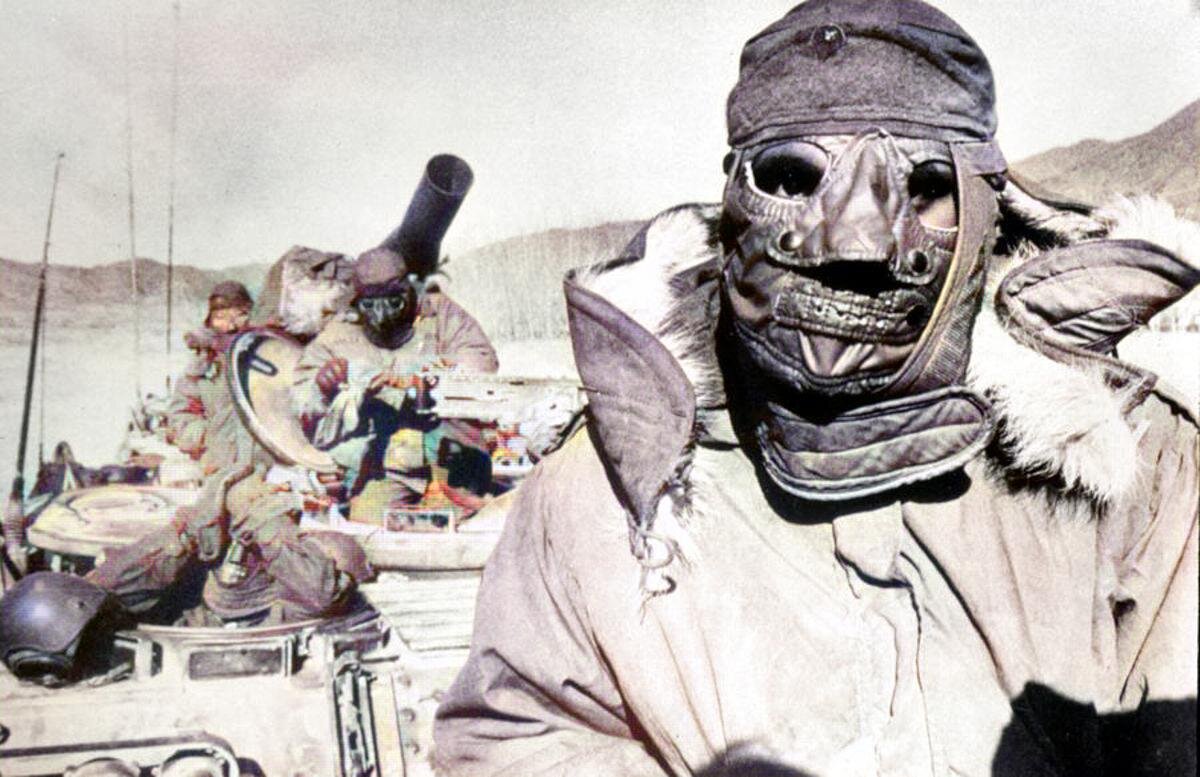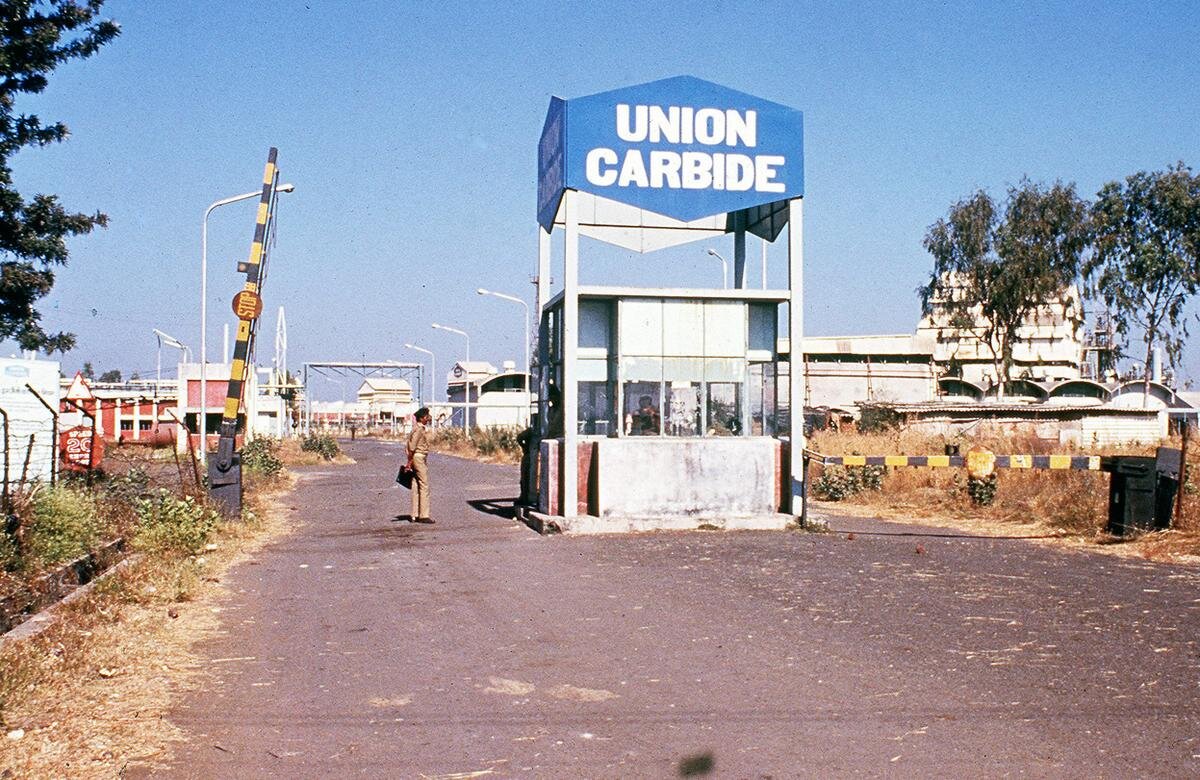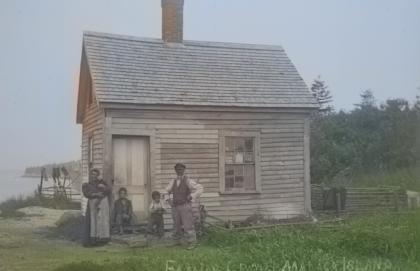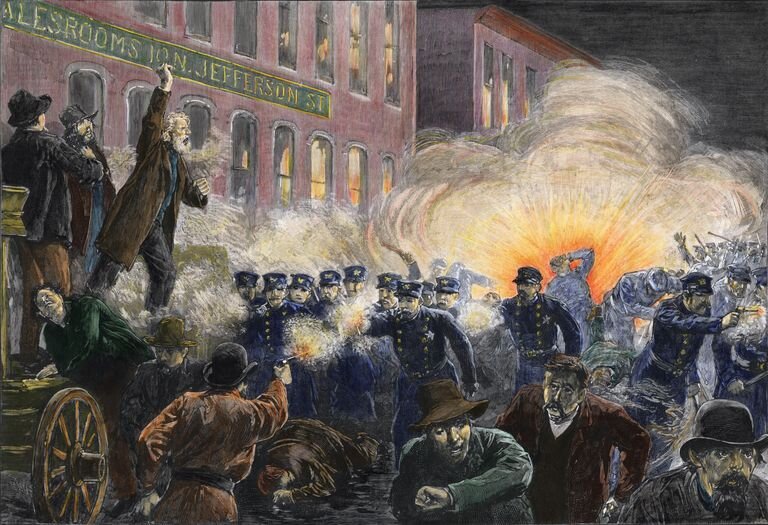Subscribe
Click the button below to subscribe to Hidden History on Spotify. Get alerted of every new episode and download them for later listening.

131: The Plot Against Democracy
In July 1933, two mysterious men approached one of the most decorated soldiers in American history with what initially appeared to be a simple proposal. He didn’t know it at the time, but Major General Smedley Butler, whose prominent career mirrored the rise of the American Empire, was being recruited into a sordid plan to overthrow President Franklin Roosevelt, and bring fascism to the United States. In this episode, take a deep look at the rise and expansion of Imperial America, and the time we came within a hair’s breadth of losing democracy.

130: The Howard Hughes Blues
On April 5, 1976, the richest man in the world died of medical neglect on board a jet bound for Houston. At the time of his death, Howard Hughes had not been seen in public for nearly twenty years. With a massive fortune that enabled his worsening mental disorders, Hughes, once famous the world over, receded from the public eye, and for the last decades of his life, ruled a vast and often unsuccessful business empire confined entirely to his bed. In time the expansive and opaque system that Hughes engineered to ensure his own isolation grew out of his own control, and as he sat in his penthouse, seeing only seven people in fifteen years, an army of self serving executives made decisions on his affairs entirely without his knowledge. While Hughes seemed to lose money on every transaction, he made a lot of his employees and their friends very wealthy. This story is a tragedy- the tale of a man who was both created and destroyed thanks to his proximity to great wealth, culminating in his own death in conditions so deplorable his corpse had to be identified via fingerprint by the FBI. In his 70 years, Howard Hughes can certainly be said to have left a colorful mark on American history. This is that story.

129: RFK Must Die
On June 5, 1968, Robert Kennedy was gunned down in the back room of a hotel kitchen just minutes after it seemed he had secured the 1968 Democratic nomination for President. The man changed with, and sentenced to death for, Kennedy’s murder was a 24 year old Palestinian American named Sirhan Sirhan. From the very beginning, it was clear that something was wrong with the official story. In this episode, we dive deep and reexamine the evidence of the case to determine who really killed Robert Kennedy.

128: CRASH!
How did a shootout between two undercover cops on an LA freeway in 1997 lead to the discovery, and subsequent coverup, of one of the largest and most sinister networks of police crime and corruption in modern American History? Learn about Kevin Gaines, Suge Knight, Versace shirts, bank robberies, drug dealer cops, the Rampart Scandal, and more in this episode of Hidden History.

127: Love Canal
What happens when your home is built on top of 20,000 tons of toxic chemical and radioactive waste? What about the park? The playground? Your child’s school? These questions were all too real for the residents of one sleepy Niagara Falls suburb, little did they know they were in the fight of their lives. Learn more about the Love Canal disaster in this week’s episode.

126: Operation Secure Tomorrow
On February 29, 2004, American troops landed in Haiti to depose the country’s first democratically elected president. Who was Jean-Bertrand Aristide, why was he overthrown by two (2) US-backed coups, and what role does it play in the context of greater US-Haiti relations?

125: POW MIA
You’ve seen it- a black flag bearing the silhouette of a forlorn prisoner, emblazoned with the letters POW MIA. The enduring myth of the missing Vietnam POWs, symbolized by this flag, is a conspiracy theory that has persisted into the current day, but its roots can be traced back to the political schemes of Richard Nixon. What’s the story behind the POW MIA flag and the right wing mass movement that inspired it?

124: Church Rock
On July 16, 1976, the worst nuclear accident in American history- the second worst in the world- took place at a uranium mill in Navajo Nation. 94,000,000 gallons of nuclear sludge, and over 1000 tons of uranium tailings rushed into the Puerco River when an dam failed at the United Nuclear Corporation’s Church Rock Mine. Though the disaster poisoned thousands of Navajo people in the surrounding areas, contaminating hundreds of square miles with cancer causing radioactive waste, the victims were given $2000 each and left to die. UNC would go on to clean up just 1% of the spill, and to this day 85% of the radiation remains. What was the Church Rock Mill disaster, and why have you probably never heard of it?

123: The Ogoni 9
On November 10, 1995, the government of Nigeria, at the urging of Royal Dutch Shell, executed nine environmental and indigenous rights activists known as the Ogoni 9. They had fought nonviolently to protect their ancestral home: a 400 square mile area of the Niger River Delta known as Ogoniland, which had been turned into hell on earth by decades of oil extraction. Who were the Ogoni 9, how did they fight back, and has there been any justice for these terrible crimes?

122: Dark Alliance
In August 1996, investigative reporter Gary Webb published a series of three articles that shined light on a vast network of international cocaine smuggling that had both caused to crack epidemic, and was sanctioned by the CIA. Though his reporting was meticulous and factual, major newspapers engaged in a massive campaign to discredit him and his work, culminating in Webb’s blacklisting from journalism followed by a tragic end. How was the CIA involved in the crack trade, what was Dark Alliance, and why was it suppressed? Find out in this episode.

121: Paperclip
From 1945 to 1959, the United States brought 1600 Nazi scientists to America in order to leverage their knowledge against the Soviets. Many were unrepentant war criminals who had played active roles in the slave trade and the Holocaust almost all were given American citizenship and died peacefully as free men. How did this secret Nazi rescue program impact our modern world? How did the American government whitewash its role? (Hint: it’s anti-Communism)

120: Art & Artifice Part I: The Pen and the Sword
Part 2 of 2. Throughout the Cold War, the CIA maintained a vast web of secret publications that it used to influence public thought and perceptions of the United States. Meanwhile back home, it funded successful attempts to remove politics and philosophy from American creative writing. Find out how the CIA manipulated writing and literature to its own anticommunist aims in this episode

119: Art & Artifice Part I: The Long Leash
Part 1 of 2. Throughout the 1950s, the CIA, through a number of secret fronts, provided funding and publicity for abstract modern art in the United States. Jackson Pollock and Mark Rothko became arrows in the Cold War quiver, as the Agency turned them, and scores of other modern artists into unwitting agents of American propaganda. How and why did the CIA accomplish this, and what does it mean for the relationship between modernism and politics?

118: A Brief History of Modern Afghanistan, Part II
Part 2 of 2. The American War in Afghanistan was defined by its cruelty, inhumanity, and futility. This episode takes a look at the history of Afghanistan in the 21st century, consumed by the shadow of America’s longest war.

117: A Brief History of Modern Afghanistan, Part I
It’s known as “The Graveyard of Empires,” and its history certainly lives up to the nickname— as news about Afghanistan is plastered across television screens throughout America, let’s take a look at the history of the country so many know so little about. Part 1 of 2.

116: Flight 655
On July 3, 1988, the USS Vincennes, an American cruiser, sailed into Iranian waters and launched a surface to air missile at Iran Air Flight 655, which it supposedly mistook for a fighter jet. Out of the 290 on board non survived. What were the events that led up to July 3rd, and how did the American government respond?

115: Los Desparacidos
Throughout the Cold War, the United States, through the CIA, funded, supplied, and protected a vast continental network of right-wing death squads that spanned South America. This genocidal collaboration between the CIA and six US-backed dictatorships was known as Operation Condor. In its wake, it left 80,000 dead, and 400,000 more disappeared into secret prisons. Learn about the life and legacy of Operation Condor in this week’s episode.

114: Silkwood
On November 14, 1974, a labor activist and chemical worker named Karen Silkwood left a union meeting and set out to blow the whistle to a reporter from the New York Times. She was never seen alive again. Who killed Karen Silkwood?

113: Gladio
Throughout the Cold War the CIA organized, funded, and supplied a network of secret armies across Europe. Recruited from fascist anti-Communist circles, these groups wove a vast web domestic terrorism— carrying out bombing campaigns, massacres, military coups, and more, all in the name of freedom, democracy, and keeping the Left out of office. Learn more about the infamous and insidious Operation Gladio in this week’s episode

112: The Great Flood
On May 31, 1889, a 60 foot wall of water tore through the city of Johnstown, destroying everything in its path. In the end, over 2,000 lay dead, and all so some rich guys could catch a couple fish

111: The Twinkie Defense
On November 28, 1978, former City Supervisor Dan White snuck into San Francisco City Hall and assassinated Mayor George Moscone and Supervisor Harvey Milk, the first widely known openly gay politician in America. Who was Harvey Milk, rise through the ranks of city politics, why was he assassinated, and what was the infamous “Twinkie Defense” employed at his trial?

110: May 13, 1985
It’s been 36 years since the Philadelphia Police Department dropped two bombs on the roof of a house in West Philadelphia, killing 11 people, including five children, in an attempt to destroy the environmentalist Black liberation group MOVE. What were the events of that led up to the MOVE Bombing, and has anyone ever faced any consequences for this act of state terror?

109: The Colfax Massacre
On Easter Sunday, 1873, a band of Klansmen and Confederate veterans committed one of the most sickening acts of violence of the Reconstruction era. In the Colfax Massacre white supremacists murdered mover 100 people in an attempt to overturn to Louisiana gubernatorial election of 1872, and cement the grip of white supremacy over the South

108: The Raising of Chicago
In the 1850s and 1860s, the young city of Chicago was blighted by disease, its growth hampered by its lack of a sewer system. In order to solve the city’s constant public health crises, a group of engineers concocted a plan that would be unthinkable today: physically lifting an entire city out of the muck.

107: The Yellow Car
Let’s take a ride through history while examining the state of American transit infrastructure, the lost streetcars of the past, and the 1940s corporate conspiracy that may have stripped transit from your city.

106: The Death of Frank Olson
At 2:25 AM on November 28, 1953, a CIA bacteriologist and chemical warfare specialist named Frank Olson got up, and ran across a dark room in his underwear, dodging two beds, to hurdle through a closed window with the blinds closed and the curtains drawn, falling 10 stories to his death. At least…that’s the official story. Frank Olson was an unwitting participant in a covert operation called MKULTRA, a two decade long crusade to develop mind control through non-consensual human experimentation. Increasingly disillusioned with his work at the CIA, and intimately knowledgeable of both MKULTRA and American use of biological weapons, Frank Olson was the man who knew too much.

105: CIA MD
Unfortunately, America has a long history of unethical medical experimentation, a tradition that’s caused mass suffering around the globe, and served to massively decrease trust in medicine. This episode covers the CIA’s fake Pakistani vaccination program, the Guatemalan Syphilis Experiments, and the Cincinnati Radiation Experiments.

104: No Gun Ri
Some call it "The Forgotten War," and they definitely have a point- the Korean War has not been memorialized in the American memory, it had neither the scale of World War II, nor the cultural impact of Vietnam. Make no mistake: brutal, horrifying, and influential, the Korean War is more important than you know. This episode takes a look at the history of the Korean Conflict, and how America's heinous war crimes helped shape a century of foreign policy.

103: Grapes of Wrath
During the Great Depression, as millions of Americans went hungry, and 2/3rds of families were in poverty, famers across the country destroyed their crops- burning wheat, cracking eggs, and pouring out milk. This episode explores the history of the Agricultural Adjustment Act, and asks: what kind of society would burn food while its people starve?

102: The Bengal Famine
From 1943 to 1944, as a result of decades of exploitative colonial policy, and intentional neglect from the British government, a terrible famine gripped the colonial Indian province of Bengal. Estimates bring the death toll in Bengal alone to three million people. This episode covers the history of colonial rule in India, and the intentional engineering of the genocidal Bengal Famine, the brutality of which has been compared to the Holocaust.

101: The Lavender Scare
From 1950 to 1954, as a part of his rabid anti-Communist crusade, a notorious liar and habitually drunk Senator from Wisconsin, Joseph McCarthy, led a crusade against homosexuals in the American government that would influence anti-gay policy all the way up until the 1990s. What was the Lavender Scare, and why did it happen?

100: Fascist USA
On February 20th, 1939, twenty thousand American Nazis held a rally in Madison Square Garden, declaring George Washington as the “first fascist.” How did Nazi movements come to thrive in the United States, and what were the social and historical conditions that paved the way for their success?

99: Killing King
This week’s episode is about COINTELPRO, the secret, illegal spying and assassination program orchestrated by the FBI from 1956 to (technically) 1971, and the 1999 trail that established that the United States Government was likely part of a conspiracy to assassinate Martin Luther King, Jr.

98: Banana Republic
This week’s episode talks about the history of American empire and international intervention, the creation of the “Banana Republic,” the Spanish American War, and the aggressive imperial policy of 1900s America.

97: Rodney the Reindeer
This week’s episode is a decidedly less-gruesome tale about a big catalogue, a little book, and a red-nosed reindeer.

96: The Good Doctor Freeman
This week’s episode is about Walter J. Freeman. Jr., the surgeon without surgical training who pioneered a brutal procedure that was used to punish the women of the 1950s for stepping out of line. Let’s talk about the gruesome and brutal history of lobotomy.

95: Are You Tired?
This week’s episode is about the unrelenting agony of the American experience. Happy stuff.

94: Waltzing Matilda
This episode talks about the beginnings of the First World War, Serbian conspiracies, the doomed campaign in Gallipoli, and a fate worse than death.

93: Chemicals and You!
In a world where the vast majority of corporate maneuvering is invisible to the average person, how have the actions of one specific sector, the chemical industry, unknowingly impacted each of our lives? What current problems can we trace back the actions of the chemical companies of the past? How do companies that poison the public get away with it? Is there any hope that in the near future, such companies will be held responsible and made to pay for their crimes?

92: Future Imperfect
Let’s talk about centrism, the election, the records of Joe Biden and Kamala Harris, anti-activism within the democratic party, and the future of politics.

91: Bhopal
In this episode, let’s talk about the worst industrial accident in American history, and the worst industrial accident in human history, both caused by the endless greed of the same company: Union Carbide.

90: The Waters of Life
It’s time to talk about the right to, and commodification of, water, Daniel Day Lewis, and why you should hate Nestle for what they’ve done to our world.

89: Comin’ Home
This episode takes on the many different forms of housing discrimination, the systems that encourage it, and how we can put an end to it.

88: Life at the End of History
Will we ever reach a time in humanity’s existence where our ideological evolution just…stops? Is it possible to settle on one set of rules until the end of time? Are we living through the “End of History?”

87: Bad Things, Bad People
The grand lesson of this episode is: it’s ok to laugh about Trump getting Covid.

86: Anatomy of a Genocide
Let’s talk about Ruth Bader Ginsburg, the legacy of the Supreme Court, involuntary sterilization, and a chilling court case from 1927.

85: The Green Dream
In this episode, it’s time to talk about the overwhelming bleakness that comes with being a young person today, the knowing destruction of our world by fossil fuel companies, useless politicians full of empty platitudes, and why meaningful social progress is impossible under capitalism.

84: Disco Inferno
On July 12th, 1979, disco died in a stadium in Chicago. Let’s talk about the social history of disco music, and the nature of reactionary movements.

83: Let Go of Obama
It’s time to reevaluate the presidency of Barack Obama and discuss the dangers of a “return to normalcy.”

82: Lists
This episode takes a look at the American surveillance state's ultimate goal of crushing political movements, the Disposition Matrix, and the drone war.

81: Mr. Bones Wild Ride
This episode examines an infamous ride in an almost 20 year old video game, and explores how it can be an allegory for the cruelty inherent within social systems.

80: Mutiny
On the night of May 22nd, 1942, Black American troops who had been the victims of brutal racism from their white commanding officers finally decided to take matters into their own hands. What happened next was hidden from the public for 70 years.

79: Monumental
In a culture where our founding fathers are revered as gods, what does it mean for our knowledge to be based on a lie? This episode explores monuments, both physical and cultural, as a means of propaganda, with special attention paid to Mt. Rushmore and the ever-popular musical, Hamilton.

78: Red Summer
In 1917, thousands of Black Americans joined the Army in hopes that their sacrifices during World War One would guarantee them civil rights at home. The horrors of the Western Front would never prepare them for the terrors of the Red Summer.

77: Malaga
In Casco Bay, off the coast of Southern Maine, sits a tiny hunk of rock, and though it’s only .06 square miles, Malaga Island holds a terrible secret.

76: Southern Nights
A man was lynched yesterday in Palmdale, California. His name was Robert Fuller. This week’s episode is an angry examination of the murders of Robert Fuller, Chauvis Carter, sundown towns, police abolition, Southern Exceptionalism and the Troxler Fading.

75: Other People’s Voices
America is ridden with terminal white supremacy. It pervades every aspect of our society, and leaves nothing untouched. Hidden History is committed to the destruction of white supremacy, the defunding of the police, and the struggle for justice.

74: Insurrection
As protests envelop a failed nation, debased and poisoned by white supremacy, authoritarianism, and greed, we take a look at the Wilmington Insurrection of 1898, a brutal white supremacist coup that overthrew the government of a North Carolina city.

73: 500 Words or Less
In a society where more and more pressure is placed on young people to attend top colleges, how does the college essay serve as a means for commodifying personal pain?

72: Take Me To Church
In 1975 a senate committee chaired by Frank Church uncovered vast and terrifying abuses of the American public by the FBI, CIA, and NSA. From guns that can give the target a lethal heart attack three days later, to ruthless spying and assassinations of political opponents, it begs the age old question of who watches the watchmen.

71: Sinking City
In August 2005, Hurricane Katrina tore through the Gulf Coast leaving death and destruction in its wake. Almost 15 years later, millions of people still live with the impact of the storm and the government's decision to simply let them drown.

70:Working Man’s Blues
What do Jim Croce, Jimmy Carter, Fred Hampton, and Richard Nixon have in common? Anything? Am I just messing with you? That’s probably something I would do, but there’s only one way to find out.

69: Truth and Shadow
When faced with a world filled with mystery and uncertainty, how can we come to recognize the truth?

68: Androcles and the Lion
Old Aesop once told a fable of a noble lion who befriended a young man after he removed a thorn from its paw. Can kindness really soothe the savage beast? Will our individual actions change the hearts of those who wish to destroy us?

66: Dabbling in Utopia
You’ve all heard it said, haughtily no doubt, by people who wear beige turtlenecks and use words like “vellichor,” that the word “utopia” means both “good place” and “no place.” I’m not going to waste your time with that kind of bullshit this week. Instead, I’m talking about the role of the Utopian society in American history, and the implications of social engineering.

65: A Thousand Paper Cranes
An old Japanese legend says that whoever folds a thousand paper cranes in a year is granted a wish by the gods. This episode tells a story of hope in the face of senseless violence.

64: I Won’t Vote for Joe Biden
Joe Biden is among the weakest candidates ever put forth by the Democratic Party. Taking into account policies like the 2002 AUMF, 2005 Bankruptcy Bill, the CCCA, NAFTA, the Hyde Amendment, Helms Amendment, and the 1994 Cime Bill, paired with his history of lying and inappropriate behavior, how can Biden reasonably expect to inspire voters? The problems he campaigns against are those of his own making.

63: Pardon Me
What is the human capacity for evil? This week I talk about the Mỹ Lai Massacre, the Nuremberg inkblot tests, the Philippine-American War, the Highway of Death, and the war criminal Eddie Gallagher.

62: Blood Money
This week the topic is the nasty and brutish American for-profit healthcare system, and why Medicare for All is the only morally conscionable policy alternative. I talk with Scott Desnoyers, who lost his son because of a $20 insurance dispute.

61: O Death
In 1911 a baseball team made up of death row inmates took to the field. They were promised that, as long as they kept winning games, they would all stay alive. In 1944, a fourteen year old boy in South Carolina was executed for a crime he didn’t commit. This episode explores the cultural role of death and capital punishment in American society.

60: Fordlandia
This episode explores the economic history of Fordism. What exactly is it? How has it impacted the ways in which we live and work? Most importantly, what inspired Henry Ford to build a failed utopia in the middle of the Brazilian jungle?

59: Song of the South
This episode examines the political history of folk and country music, the notion of the American Heartland, and the dominating power of culture.

57: The Worst Song in the World
This week I take a look at the role of militarism and propaganda as seen through the lens of media depictions of the American military and the proliferation of military recruiting tools.

56: Under God
In 1954, in an attempt to differentiate America from the atheistic USSR, the words “under God” were added to the pledge of allegiance. This episode takes a look at the hypocrisy of Cold War culture, governmental deception, the nature of cultural dominance, and what it means to be a patriot.

55: John Brown’s Body
The final part in a multi part series on racial violence, this episode examines the legacy of economic discrimination, the criminalisation of poverty, and the link between racism and capitalism. Are the two inseparable?

54: Nativism and Binary
The second part in a multi part series on racial violence, this episode covers the colonial legacy of white supremacy, and analyzes the destructive nature of the social binary.

53: Black Wall Street
The first part in a multi part series on racial violence, this episode explores the history of the 1921 Tulsa Massacre, the racial influences that led to the founding of the city, and the structural legacy of white supremacy.

52: Ronald Reagan vs. ATC
The final entry in a multi-part series on labor, let's wrap things up by talking about the 1981 PATCO strike, the Volcker shock, and Ronald Reagan.

51: Taft-Hartley
The fourth entry in a multi-part series on labor, this episode covers labor developments from 1920 to 1947. Beginning with the Oahu Sugar Strike of 1920, and ending with the Taft-Hartley Act, it’s time to talk about the Columbine Mine Massacre, the Loray Mill Strike, and right to work laws.

50: Workmen Don’t Ask, They Demand
The third entry in a multi-part series on labor, this is the longest and most in-depth episode of the show yet. Let's learn about anti-union violence, leftism, and anarchism from 1870-1920. It's time to talk about the Bay View Massacre, the Long Depression, the Knights of Labor, the 1892 Homestead Strike, the LA Times bombing, the murder of Frank Little, and much much more.

49: Mercantilism?
The second episode in a multi-part series, this episode examines the history and implications of Mercantilist theory, as well as the manifestations of early labor organizations as seen in the Philadelphia GTU Strike of 1835

48: The Union That Works For You
Let's talk a little bit about union history. The first episode in this multi-part series covers organized labor in ancient times, as well as common misconceptions about an early labor group.

47: Be Bush, Do Crimes
The Bush Administration's War on Terror has left a conspicuous black mark on the American mind. Meanwhile, the legacy of George W. Bush is in the process of being rehabilitated, let's find out why that's a very bad idea. In the process, maybe we can apply a critical lens to American foreign policy and consider the impact of American imperialism and militarism.

46: Anita Bryant Sucks Oranges
In this week’s episode let’s talk about the rise and fall of Anita Bryant, a former country singer, evangelical Christian, and the orange juice industry’s most notable homophobic bigot.

45: The Elephant in the Room
On September 13th, 1916, an elephant was sentenced to a hanging death by an angry mob and an opportunistic circus owner. What can the death of Mary the elephant tell us about the expectations we hold for others?

44: A House Reconstructed
The Civil War was one of the most destructive wars in American history- more soldiers died in the Civil War than the sum total of all previous American war casualties. Let's talk about the human cost of war.

43: Coney Island Days
There are few things more ubiquitously American than the hot dog. This classic fast food has far more history than it seems- let's talk about the hot dog as a cultural vessel for the shared experiences of Greek and Macedonian immigrants in the 1900s, and as a target for American anxieties about our food.

42: The Landlord’s Game
In this week’s episode, learn about Georgism, LVTs, the Law of Rent, the spread of ideas, and how the idea for the world’s most popular (and most hated) board game was stolen from a Midwestern Quaker woman.

41: The Velvet Swing
Learn about the story of Evelyn Nesbit, a teenage model and actress who was repeatedly brutalized and controlled by the rich and powerful monsters of 1900s New York.

40: Acres of Skin
Take a look inside the brutal human experimentation that went on for 23 years behind the walls of a prison in one of America’s largest cities. With cruelty that has been compared to the Holocaust, it’s about time we talk about Holmesburg.

39: A Land of Milk and Honey
This week take a look at two perfectly similar versions of paradise separated by half a millennium.